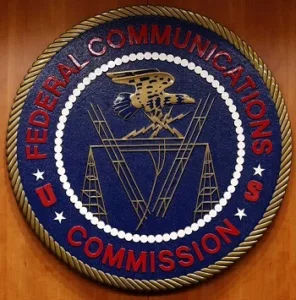The FCC has now announced a delay of its auction of UHF spectrum until 2016. Through an announcement in late October, the Commission is apparently reacting to a move by broadcasters to block or delay the planned 2015 auction proceedings.
Earlier this year, the FCC released a Report and Order (“RO”) adopting rules to implement a “forward auction” of the 600 MHz ultra-high frequency (“UHF”) spectrum, now mostly used for over-the-air television transmission, in order to provide for new, competing mobile broadband services. The Order began a process to reallocate wireless spectrum to bidders striving to compete with broadcasters, and includes an opportunity for incumbent broadcasters to return some or all of their broadcast spectrum in a “reverse auction”.
But in August, the National Association of Broadcasters (NAB) filed a Petition for Review (i.e., a lawsuit) with a federal court, on the grounds that the RO “violates the Spectrum Act … is arbitrary, capricious, and an abuse of discretion … was adopted in violation of the APA’s notice requirements … and is otherwise contrary to law”. The NAB also asked the court to “hold unlawful, vacate, enjoin, and set aside the Commission’s adoption of TVStudy in the Order and grant such additional relief as may be necessary and appropriate”.
FCC Chairman Tom Wheeler may have anticipated such a roadblock in comments last year, writing that “managing a complex undertaking such as this also requires an ongoing commitment to continuously and honestly assess its readiness and its project plan”. In the October announcement, Gary Epstein, Chair of the FCC’s Incentive Auction Task Force, writes that “…there are undeniable impediments to our efforts to implement a successful auction. As chairman Wheeler indicated several weeks ago, the court challenges to the auction rules by some broadcasters have introduced uncertainty”.
In responding to the NAB Petition, the court has issued a briefing schedule in which the final briefs are not due until late January 2015. Oral arguments will follow at a later date yet to be determined, with a decision not likely until mid-2015.
While saying that the Commission “is confident they will prevail in court,” Epstein goes on to say that “given the reality of [the court] schedule, the complexity of designing and implementing the auction, and the need for all auction participants to have certainty well in advance of the auction, we now anticipate accepting applications for the auction in the fall of 2015 and starting the auction in early 2016”.
Meanwhile, the FCC expects to vote on a Comment Public Notice (CPN) before the end of the year. The CPN will propose and seek comment on the detailed directions for how the auction will be conducted, including the methodology to be used to establish opening bids for the reverse and forward auctions, how to define “impaired” markets subject to interference, and the components of the “final stage rule”.
There is little doubt that both a forward and reverse auction of the UHF spectrum will take place, and new, competitive uses of the spectrum will emerge – most of them video-based – that will alter the spectrum monopoly that broadcasters have enjoyed going back as far as 1938. But alternate delivery schemes like cable, satellite and the internet provide a mixed blessing to the broadcasting business model – opening up competition, while at the same time providing a transition path where the transmission medium is not locked in to content distribution. But changing a legacy business model through federal rules and regulations is not something that broadcasters accept willingly, so we can expect there to be additional “negotiation” taking place in the courts, who will have to balance the public interest with that of incumbent businesses. Add to that a changing balance of Congress, and it’s conceivable that some new options may emerge for broadcasters by the time of the next U.S. Presidential campaign. – Aldo Cugnini

